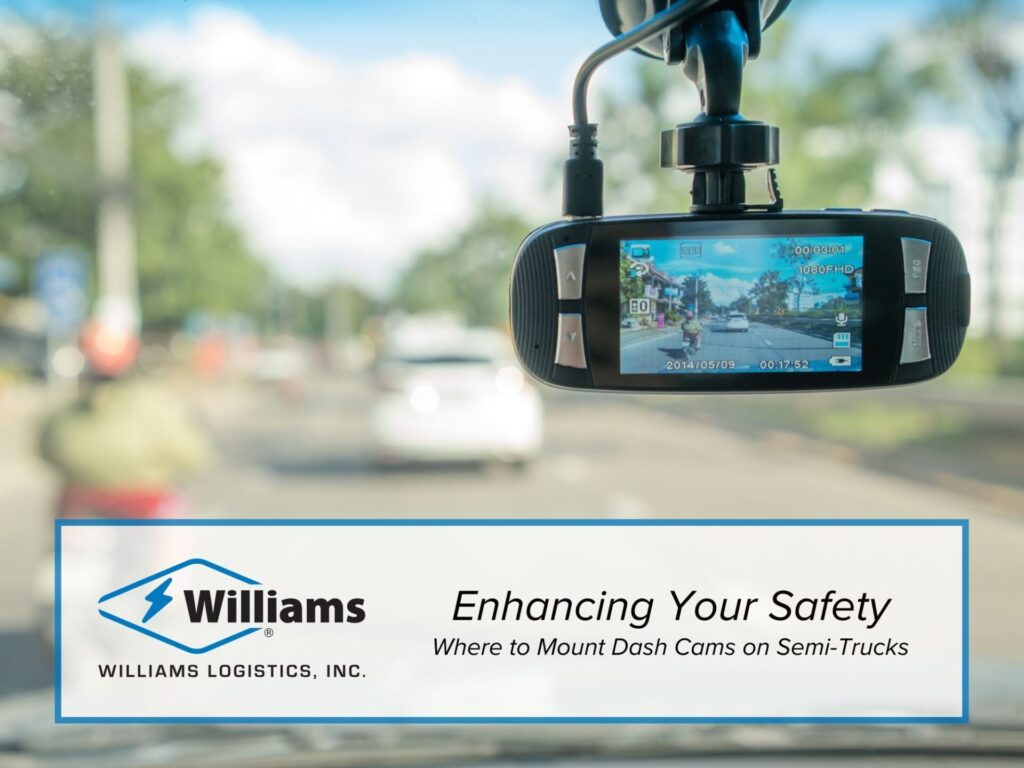Dash cams have become an increasingly popular tool for ensuring safety and security on the roads. While they are widely used in personal vehicles, their benefits are equally applicable to commercial vehicles, especially semi-trucks. In this blog post, we will delve into what dash cams are for semi-trucks, how they work, and examine their legality.
What is a Dash Cam?
A dash cam for semi-trucks is a compact video recording device strategically positioned on the windshield or dashboard to capture a wide-angle view of the road ahead. These robust cameras are specifically designed to meet the demanding conditions of a commercial trucking environment, including extreme temperatures, vibration, and constant use. Typically, these devices are equipped with high-definition lenses, GPS tracking systems, and other features that facilitate reliable and accurate video recording.
How Do Dash Cams Work for Semi-Trucks?
Dash cams for semi-trucks operate by continuously recording video footage as the vehicle is in motion. These devices employ loop recording, meaning that when the storage capacity is full, the oldest files are overwritten with new ones. This ensures that the camera captures the most recent events.
Moreover, many advanced dash cams for semi-trucks also incorporate incident-triggered recording capabilities, such as G-sensors. When an abrupt change in acceleration or deceleration occurs (e.g., sudden braking, collisions), the dash cam immediately saves the footage surrounding the event, protecting it from being overwritten. Some models even offer real-time notifications, enabling fleet managers to monitor potential incidents and take immediate action.
Where to Mount Dash Cams on a Semi-Truck:
Finding the optimal mounting location is crucial to maximize the effectiveness of dash cams on semi-trucks. Here are a few ideal positions to consider:
-
- Windshield: Mounting the dash cam in the center of the windshield, near or behind the rear-view mirror, provides the best vantage point for capturing the road ahead. This placement ensures a wide viewing angle and minimizes any potential obstructions. However, it's important to verify that the dash cam's position adheres to local regulations concerning visibility limitations.
- Dashboard: Alternatively, mounting the dash cam on the dashboard can offer a lower, yet still effective, perspective. This approach may be preferred by some truck drivers as it places the device at eye level and minimizes potential distractions.
- Side-View Mirrors: In addition to front-facing cameras, many trucking companies are opting to install side-view or blind-spot cameras on semi-trucks to enhance safety. These cameras are mounted on the truck's side mirrors, providing drivers with an extended view of adjacent lanes and reducing the risk of accidents caused by blind spots.
Are Dash Cams Legal?
The legality of dash cams for semi-trucks varies depending on the jurisdiction. As with any technology, it is essential to comply with local regulations. In most regions, using a dash cam is generally legal as long as it does not obstruct the driver's view, interfere with their driving, or violate any privacy rights.
It is worth noting that some areas require explicit signage informing passengers and individuals outside the vehicle that they are being recorded. Fleet managers and drivers should familiarize themselves with local laws and verify compliance with dash cam installations.
Incorporating dash cams into the safety arsenal of semi-trucks is an increasingly popular choice. These devices provide valuable evidence in case of accidents, vandalism, or falsified accident claims. By deciding on the proper mounting location and ensuring compliance with local regulations, trucking companies can enhance safety on the roads for their drivers and others while improving fleet management efficiency.
